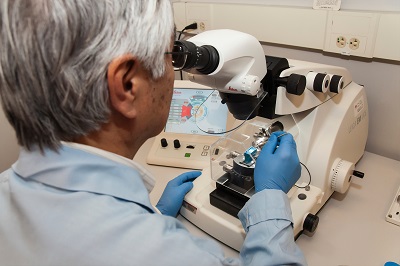What are the procedures, required materials, and considerations for Class II in vitro diagnostic medical device MDL registration?
Release time:2024-10-30 10:34:00
The author:
source:
To register a Class II in vitro diagnostic (IVD) medical device for a Medical Device License (MDL) in Canada, you’ll need to follow Health Canada’s specific procedures, compile required materials, and keep key regulatory considerations in mind.
To register a Class II in vitro diagnostic (IVD) medical device for a Medical Device License (MDL) in Canada, you’ll need to follow Health Canada’s specific procedures, compile required materials, and keep key regulatory considerations in mind. Below is a comprehensive guide:
1. Procedures for Class II IVD MDL Registration
Step 1: Confirm Classification
- Ensure that your device qualifies as a Class II IVD, which is generally moderate-risk. Refer to Health Canada’s Guidance Document: Classification of In Vitro Diagnostic Devices for details.
Step 2: Prepare Quality Management System (QMS) Certification
- ISO 13485 Certification: Health Canada requires a QMS compliant with ISO 13485 for Class II devices.
- MDSAP Certification: Health Canada mandates manufacturers to hold an MDSAP (Medical Device Single Audit Program) certification, covering Canada’s regulatory requirements under ISO 13485.
Step 3: Complete Form 3011 (MDL Application)
- Fill out Form 3011, which is the application for a Medical Device License. This form requires detailed information, including:
- Device description and intended use
- Manufacturer information
- QMS certification details
- Download Form 3011 from Health Canada’s website, complete it electronically, and prepare for submission.
Step 4: Submit Documentation and Pay Fees
- Electronic Submission: Submit the completed application through the Medical Device eSubmission System (MDEL Portal).
- Fee Payment: Pay the application fee, which for Class II devices generally falls between CAD $5,000 and CAD $6,000.
Step 5: Health Canada Review and License Issuance
- Health Canada reviews the submission within an estimated 60 days. They may request additional information or clarifications during the review.
- Once approved, Health Canada will issue the MDL, allowing you to market and sell the device in Canada.
2. Required Materials for Submission
The following materials and documents are required for a successful submission:
- Completed Form 3011: Includes device specifications, manufacturer information, and certification details.
- Quality Management System Certification: Evidence of MDSAP certification, indicating ISO 13485 compliance.
- Device Description and Technical Specifications: Detailed information on the device’s design, components, and operational principles.
- Intended Use and Indications: Clearly defined use cases, target conditions, and intended users.
- Performance Testing and Validation Data: Data showing the device’s safety and efficacy, including:
- Analytical performance (e.g., sensitivity, specificity)
- Clinical validation data (if necessary)
- Risk analysis per ISO 14971 standards
- Labeling and Instructions for Use (IFU): Provide samples of proposed labeling and IFUs that meet regulatory standards and include:
- Instructions for proper use
- Warnings, limitations, and contraindications
- Bilingual content (English and French) per Canadian requirements
3. Key Considerations for Registration
- Compliance with Health Canada’s Regulations: Ensure that your submission adheres to the Canadian Medical Devices Regulations (SOR/98-282), which outline all obligations for device manufacturers.
- Eligibility for Fee Reductions: Small businesses may qualify for a 25% fee reduction on application fees. If applicable, provide documentation showing eligibility.
- Post-Market Surveillance and Reporting Obligations: After licensing, you’re required to monitor the device’s performance and report adverse events to Health Canada. Plan a system for ongoing post-market surveillance.
- Change Notifications: Significant changes to the device (e.g., design or manufacturing process modifications) must be reported to Health Canada. These may require a license amendment.
- Renewal Fees: Annual renewal fees are required to maintain the MDL for Class II devices, typically around CAD $350.

Contact Us:
Whatsapp or Wechat:+86 15816864648;email address:hito.lin@grzan.cn
.png)
.jpg)
.png)

.png)